Why is My Breaker Too Hot to Touch?
Have you ever found a breaker in a panel that was physically warm to the touch? Have you ever wondered why? In the latest episode of Electrician U, Dustin explores the reasons why any of the breakers in a panel would be warm/hot.
🤘⚡️MEMBERSHIP⚡️🤘
JOIN ELECTRICIAN U - become a member and get:
FREE Continuing Education every year
FREE Practice Exams
FREE Monthly Video Courses
FREE Weekly Live Instructor-Led Classes
FREE Monthly Educational Newsletter
Premium Members-Only Content
Private Discord Channel
Monthly Members-Only Discord Chats
Sign up here --- https://www.electricianu.com/electrician-u-membership/
🎧🎹MUSIC AND VIDEO:🎹🎧
https://www.facebook.com/descantmv
🎬✍️ART AND ILLUSTRATION:✍️🎬
https://www.daverussoart.com
While many first reactions would be to say, “the breaker is bad”, this should usually be reserved for the LAST option. A proper diagnosis of the entire scenario is required to figure out what the problem really is. Look at the appliance first. As appliances get older/more usage, they can tend to fail and potentially draw more current than they normally would. Especially motors. When motors spin slower or have parts within them start to fail, they will draw more current. And current equates to heat.
Breakers are designed to trip when they get to around 130% of their rated value. And that is built up over an elongated period of time. So, if the breaker is pulling 110% of its value, its not enough to necessarily trip the breaker, but the heat generated for the over amperage will display itself in the breaker. Again, usually reserved for the last option, the problem COULD be the breaker as they are comprised of many moving parts within the breaker itself. And any one of these pieces could have an issue; especially in an older breaker that has seen some usage.
Improper torquing of the wires (both coming into the panel and the ones for the branch circuits) could lead to a buildup of heat and that heat will be transferred to the breaker itself. The current will tend to flow on the outside of the conductor strands and will only transfer at the actual point of contact with the next surface. And if you have a small contact point, you are forcing it to transfer all its current thru a small point, thus generating heat. Charring/blackening of conductors or melting of insulation at the point of improper torquing can be a visual sign of the issue.
Improper balancing of the panel loads can also lead to the breaker heating up. If you have much more load installed on the A phase of the panel than the B phase, your conductors/breaker will certainly be drawing much more load than intended and will most certainly be much warmer. Same would be true of the neutral as it is designed to carry the unbalanced current between the two phases.
So, try to leave the “bad breaker” statement out until all other options have been exhausted. If you get thru the above items and nothing seems awry, then perhaps test the breaker to see what is going on. If you happen to have a spare breaker, swap it out with the offending one and see if the situation replicates. If you don’t happen to have one just laying around, then you could always move the load to a known good breaker within the panel (remove the previous load first!!) and try it that way. Regardless of the situation, always get a licensed qualified electrician to do this type of troubleshooting and testing. They have the experience, tools, and knowledge.
We hope this has been helpful in understanding why your breaker could be warm/hot to the touch. Is there a topic you would like to see discussed? Leave a comment in the comment section below and let us know. Please continue to follow Dustin and Electrician U as we are constantly updating our content to provide our followers with new information to help them become the best electricians they can be.
-
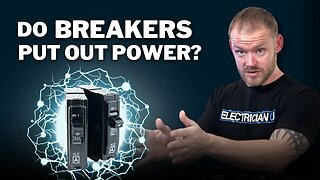 3:34
3:34
Electrician U
1 year agoCommon Misconception: Do Breakers Put Out Power???
1.19K1 -
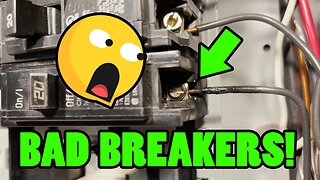 11:44
11:44
Electrician U
2 years agoHow to Tell if a Breaker is Bad
557 -
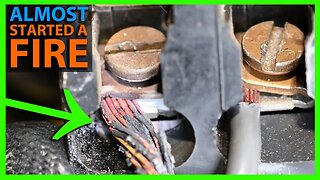 27:47
27:47
Benjamin Sahlstrom
1 year agoBurned Wire On Breaker - Torque Screwdrivers & Why You Should Probably Be Using One
31 -
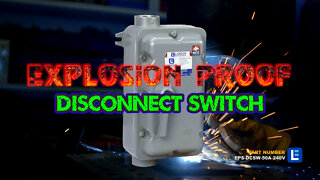 1:28
1:28
Larson Electronics - American Made and Manufactured Industrial Lighting and UVC Products
2 years agoExplosion Proof Disconnect Switch - Class 1 Division 1 - Groups C, D - 240V Rated
13 -
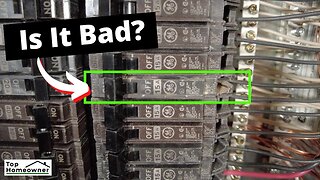 5:34
5:34
Top Homeowner
1 year agoRecognizing a Bad Circuit Breaker - DIY Home Electrical Safety
10 -
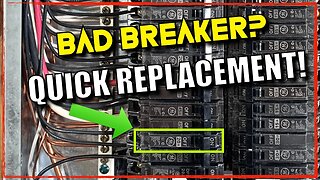 4:46
4:46
Top Homeowner
2 years ago $0.19 earnedHow to Replace a Circuit Breaker | Quick and Simple Step-by-Step Process
55 -
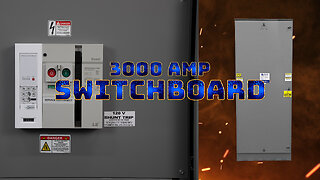 1:04
1:04
larsonelectronics
2 months ago3000A Switchboard with 3000A Circuit Breaker - 480V 3PH, 60Hz - Type 3R
9 -
 7:41
7:41
This Guy
3 years ago $0.01 earnedEASY FLOOR HEAT (using a new or used hot water heater!)
117 -
 1:46
1:46
Larson Electronics - American Made and Manufactured Industrial Lighting and UVC Products
2 years agoWE'VE GOT THE POWER - MUSIC VIDEO Industrial Power Distribution & Lighting Larson Electronics (2021)
116 -
 0:10
0:10
NBRC
1 year agoHard hit